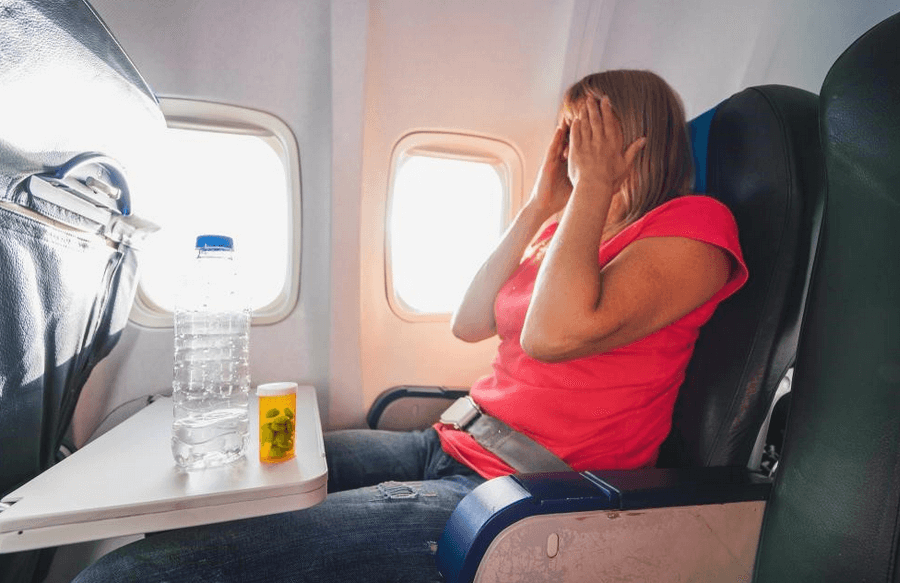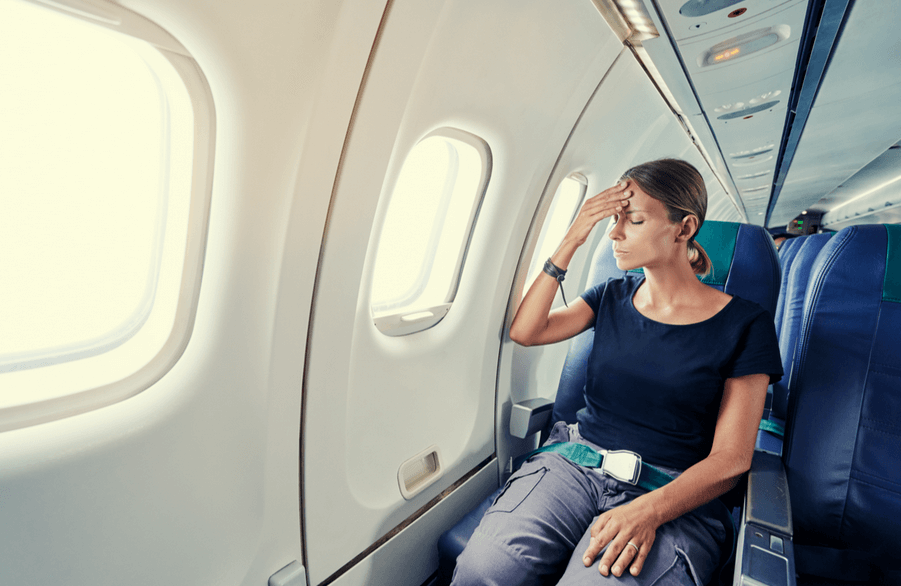📑Table of Contents:
Flying can be nerve-wracking for some, but is the fear of flying justified? For many, the thought of soaring thousands of feet in the air brings anxiety, but the truth is that flying is one of the safest modes of transportation. The odds of being in an accident are so low that worrying about them seems silly when you look at the facts. In this blog, we’ll explore why being scared of flying makes no sense and how understanding these facts can help calm your fears.

1. Flying is the Safest Form of Transportation
One of the most important facts to remember is that flying is statistically the safest mode of transportation. Commercial airlines operate with incredible precision and safety protocols. You’re far more likely to experience an accident while driving to the airport than flying in a plane.
According to the National Safety Council, the chances of dying in a car accident are 1 in 107, while your chances of being in a plane crash are about 1 in 11 million. That means you are hundreds of times more likely to encounter danger driving than flying.
Why Is Flying So Safe?
There are several reasons why flying is so safe:
- Highly Trained Pilots: Airline pilots undergo extensive training and must regularly renew their licenses. Many have decades of experience.
- Stringent Safety Regulations: The aviation industry is heavily regulated, with strict standards for safety, maintenance, and performance.
- Advanced Technology: Modern planes have sophisticated technology to ensure safe navigation, even in challenging conditions.
2. Turbulence is Normal and Safe
For many, turbulence triggers fear, but it’s essential to understand that turbulence is completely normal and safe. Airplanes are built to handle turbulence, and pilots are trained to navigate through or around it when possible.
Turbulence is caused by air currents, similar to how waves move in the ocean. Although it might feel uncomfortable, turbulence rarely causes damage to aircraft. Planes are designed with flexibility, allowing them to adjust and absorb bumps without any issues.
Tips for Handling Turbulence
- Stay Seated: Fastening your seatbelt during turbulence will keep you safe and secure.
- Focus on Breathing: Deep breathing exercises can help reduce anxiety during turbulence.
- Remember the Facts: When turbulence hits, remember that it’s normal and that the plane is built to withstand much stronger forces.
3. Planes Undergo Strict Maintenance
Airplanes are some of the most meticulously maintained vehicles on the planet. Every commercial aircraft must pass rigorous inspections and undergo regular maintenance checks. Before every flight, mechanics carefully inspect the plane, ensuring everything is in top shape.
Maintenance teams follow detailed schedules to check every part of the plane, from the engines to the landing gear. This constant attention to detail makes it extremely unlikely for anything to go wrong mid-flight.
Behind the Scenes: How Planes Stay in Top Shape
- Daily Inspections: Engineers check the aircraft before every flight to ensure everything functions correctly.
- Regular Maintenance: After several flight hours, planes must undergo thorough inspections. Parts are replaced, and systems are tested to ensure top performance.
- Redundancy Systems: Planes are built with multiple backups. If one system fails, another takes over, making mid-air issues highly unlikely.
4. Fear of Flying is Driven by Irrational Thinking

Much of the fear of flying comes from irrational thoughts and a lack of control. When we fly, we trust someone else—the pilots and the airline. This lack of control can cause anxiety, especially when mixed with common myths about flying.
It’s important to realize that fear often comes from not understanding how things work. We rarely think twice about driving a car, but that’s because we know how it operates. Planes are no different—once you understand that pilots, engineers, and technology are working together to keep you safe, the fear becomes less rational.
Common Irrational Thoughts About Flying
- “What if something goes wrong?”: Planes have multiple backup systems, and pilots are trained for every scenario.
- “Planes aren’t supposed to be in the air!”: Airplanes are designed to fly and stay in the air safely, using physics understood and perfected over decades.
5. Pilots Are Incredibly Skilled and Experienced
Commercial airline pilots are among the most highly trained professionals in the world. They undergo rigorous testing, thousands of hours of flight training, and continuous education throughout their careers. Before flying a commercial plane, they log hundreds of hours in simulators and real planes to prepare for any situation.
Pilots are also required to take regular medical exams, and they practice emergency procedures frequently. If something unexpected happens during a flight, you can trust that the pilot has been trained to handle it calmly and safely.
What Makes Pilots So Prepared?
- Extensive Flight Hours: Before flying passengers, pilots must complete years of training and accumulate thousands of flight hours.
- Ongoing Training: Pilots undergo continuous training to ensure they are updated on safety procedures, including handling emergencies.
- Simulation Practice: Pilots regularly practice emergency scenarios in simulators, preparing them for any possible situation.
6. Air Traffic Control Ensures Safety in the Skies
Behind the scenes, air traffic controllers monitor planes at all times. These professionals work tirelessly to ensure that each plane stays on course and that safe distances between planes exist. They also guide planes during takeoff and landing, ensuring everything goes smoothly.
Air traffic controllers constantly communicate with pilots, providing the latest weather information and flight paths. This constant communication and monitoring reduce the risk of any issues arising during the flight.
Air Traffic Control in Action
- Monitoring Flight Paths: Controllers track each flight’s path, ensuring there is no risk of collision or deviation.
- Weather Updates: They provide pilots with real-time updates on weather conditions, helping avoid bad weather.
- Guiding Takeoffs and Landings: Air traffic control plays a crucial role in the most critical phases of flight, ensuring smooth and safe landings.

Conclusion
Fear of flying is common, but when you break down the facts, it becomes clear that the fear is largely irrational. Flying is one of the safest travel methods, thanks to highly skilled pilots, cutting-edge technology, and strict safety protocols. Understanding how planes operate, why turbulence is nothing to fear, and the immense safety measures in place can help you conquer that anxiety.
So, the next time you step on a plane, remember these facts, relax, and enjoy your journey. You’re in incredibly safe hands!





